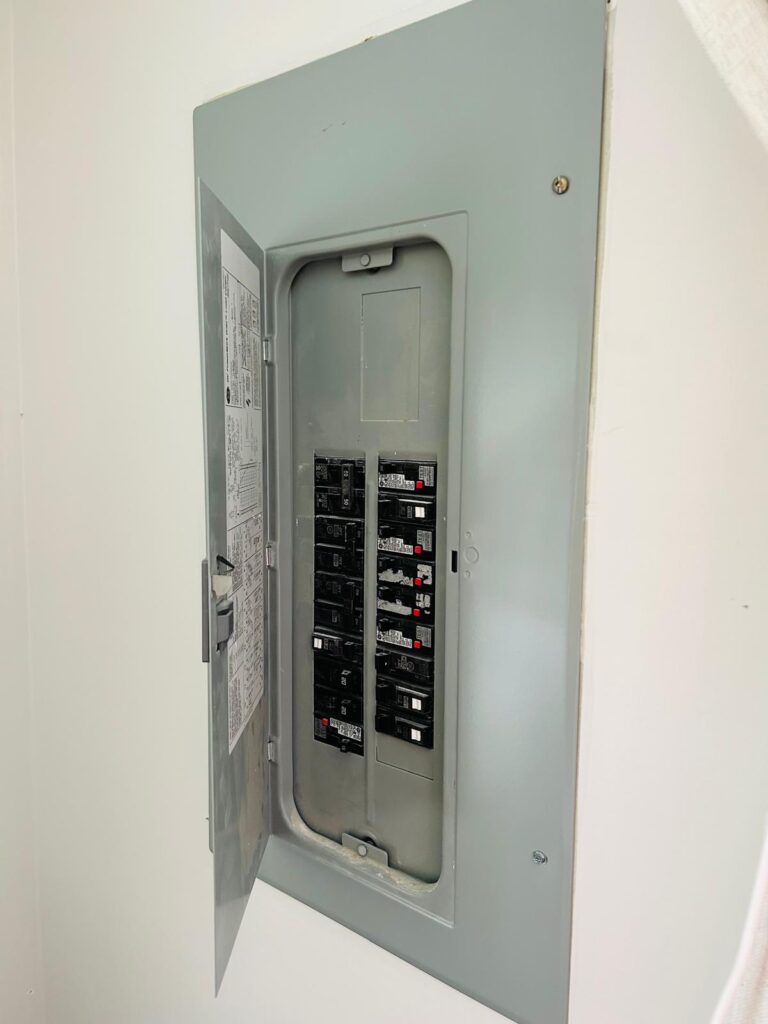Circuit breakers are a vital part of your home’s electrical system. They protect your home by shutting off electricity when there’s a problem, such as an overload or short circuit. However, frequently tripping breakers can be both frustrating and indicative of deeper issues. Let’s dive into three common reasons for tripped breakers, ways to prevent them, and what to do if it happens.
Reason #1: Overloaded Circuits
One of the most common causes of a tripped breaker is an overloaded circuit. This occurs when you plug in too many devices or appliances that collectively draw more electricity than the circuit can handle. For instance, running a space heater, a hairdryer, and a vacuum on the same circuit can quickly overload it.
How to Prevent It:
Distribute your devices: Spread high-energy appliances across multiple circuits if possible.
Know your circuit limits: Check the breaker’s amperage rating (usually 15 or 20 amps) and ensure your devices’ total draw stays below that limit.
Upgrade if necessary: If your home’s electrical system frequently struggles to meet your needs, consult an electrician about upgrading your circuits or adding new ones.
What to Do If It Happens:
Unplug devices from the circuit.
Go to your breaker panel and flip the tripped breaker to the “off” position before switching it back on.
Plug devices back in one at a time to identify if one is drawing excessive power.
Reason #2: Short Circuits
A short circuit happens when a hot wire comes into direct contact with a neutral or ground wire. This can cause a surge of electricity that the breaker detects, shutting off power to prevent damage or fire. Short circuits are often caused by damaged wiring, faulty outlets, or problematic appliances.
How to Prevent It:
Inspect wiring and outlets: Periodically check for frayed wires or loose connections.
Use high-quality appliances: Ensure your devices are in good working condition and meet safety standards.
Avoid DIY wiring: Leave electrical repairs or installations to licensed electricians.
What to Do If It Happens:
Unplug everything on the circuit.
Reset the breaker.
If it trips again immediately, contact an electrician to investigate and fix the problem.
Reason #3: Ground Faults
A ground fault occurs when a hot wire touches the ground wire or a grounded part of a metal outlet box. Similar to a short circuit, this results in a surge of electricity. Ground faults are especially dangerous in areas like bathrooms, kitchens, or outdoor spaces where water is present.
How to Prevent It:
Install GFCI outlets: Ground Fault Circuit Interrupter (GFCI) outlets are designed to cut power immediately if a ground fault is detected.
Keep outlets dry: Ensure outlets in moisture-prone areas are protected from water.
Hire a professional: Have an electrician inspect and update older outlets and wiring.
What to Do If It Happens:
Turn off power to the affected area using the breaker.
Inspect for any visible damage or water exposure.
Call a licensed electrician if the problem persists.
Final Thoughts
While circuit breaker tripping is a sign that your electrical system is doing its job, frequent trips are a warning sign of potential hazards. By understanding the common causes and taking preventive measures, you can ensure your home’s safety and reduce inconvenience. When in doubt, always consult a licensed electrician to address persistent issues. Electricity is not something to gamble with—your safety depends on it!


